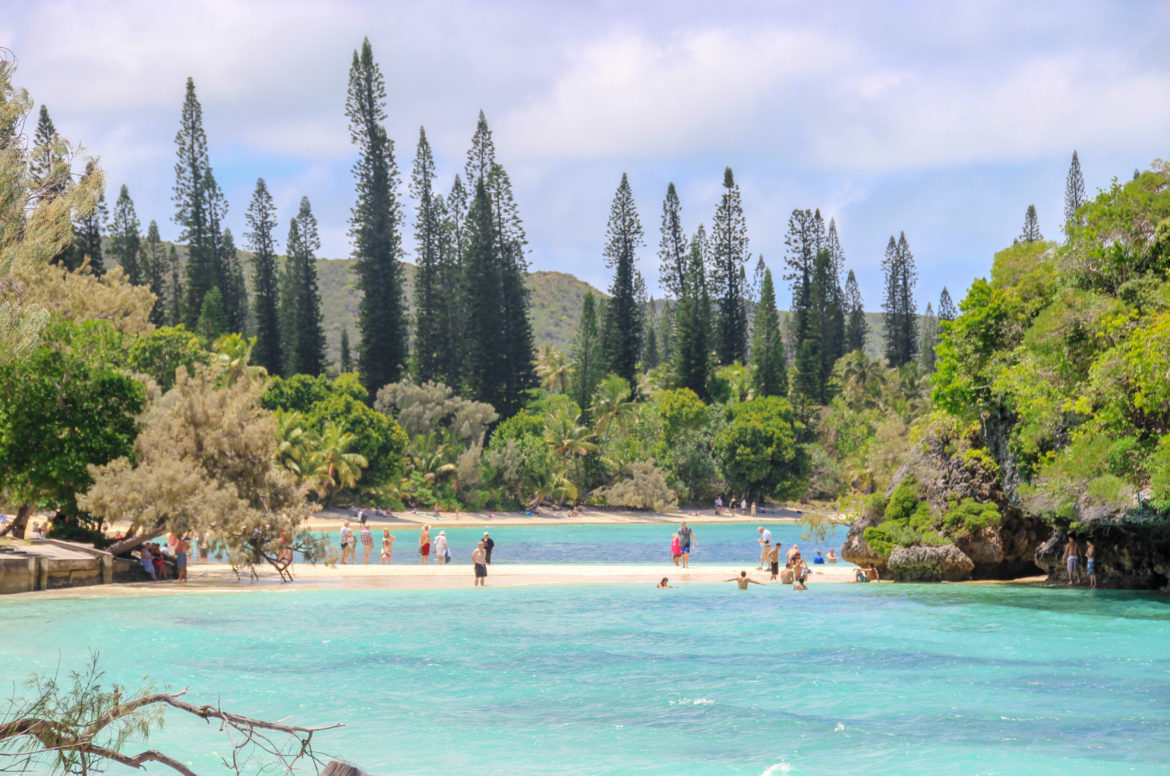Isle de Pines is the perfect getaway. Named after the island’s native pine trees, this unique tropical setting is a one-of-a-kind destination. Surrounded by colorful coral reefs with pristine lagoons, this island of beaches and bays also has interesting culture and landscapes. As an Acupuncturist-at-Sea, I spent days off here and love sharing its beauty and highlights. So, read on to discover why Isle de Pines travel takes you to “the closest island to paradise.”
Isle de Pines is part of the New Caledonia archipelago, an overseas collectivity of France. Referred to as ‘the closest island to paradise,’ the extraordinary New Caledonia Barrier Reef surrounds it. Moreover, Captain Cook named the island after its unique, tall native pines, Araucaria columnaris. In contrast to the stereotypical palm trees in a tropical setting, the Isle de Pines still grows these ancient fossils from the Triassic Period. They dominate the islands landscapes with silhouettes of tall, columnar pines, up to 60 meters (196 ft) high. After the mass extinction that wiped out the dinosaurs, 19 species of Araucaria remain worldwide. From these, 13 are endemic to New Caledonia. This pine, also, has unique thin, paper-like bark that peels away from the trunk.
The island is especially known for its pristine, white sandy beaches for swimming and snorkeling. The center of the island has a plateau at 262 metres (860 ft) for awesome panoramic views. With interesting flora and fauna, the Isle de Pines is also home to the world’s largest gecko, Rhacodactylus leachianus. Furthermore, the Melanesian Kanaks are the main inhabitants of the island. However, the island has been a French island since 1853, as a penal colony for years.
Isle de Pines Travel Highlights
Isle de Pines Bays and Beaches
Kanumera Bay: The iconic bay is dominated by its massive sacred rock in the center. I found a sign for the rock saying: “Please respect that is strictly prohibited to climb this sacred rock.” Therefore, this rock remains in pristine solitude. In the bay, east of Kanumera Rock is one of the most accessible and beautiful areas to snorkel among the branch coral and its marine denizens. For example, snorkelers see groupers, angelfish, damselfish and clownfish.
Related: A Magical New Caledonia Getaway on Mare Island
Kuto Bay: This bay is open to the ocean and known for the most pure and white sands on the island. Additionally, many of the restaurants line along here for views and fresh seafood.
Oro Bay: This popular place forms a natural sea water swimming pool, separated from the bay by a barrier of rocks. Additionally, Oro Bay is another poplar site for snorkeling.
Grotto de Hortense
There are many caves hidden in the Isle de Pines landscapes. However, the legendary Grotto de Hortense is the landmark setting for a legendary story. Surrounded by lush, tropical gardens, the cave’s intriguing tunnels maze inside the limestone cliff . Here, Queen Hortense took refuge for several months during tribal conflicts in 1855.
Wood Totems and Monument
Near Maurice Beach, this captivating monument, lays out numerous, gorgeous wood totems in a circle around a Catholic Statue. With the backdrop of the ocean, the native totems around the Catholic statue symbolize the religious diversity of New Caledonia. Also, this memorializes the first Catholic service on the island.
Overall…
This unique island is stunning with so many ways to enjoy the beauty of Mother Nature. And the best part of it all, is that the it remains serenely authentic and unexploited. So, if you are needing a true healing adventure, the Isle de Pines is waiting for you.
Next: Eight Tips for Snorkeling Australia’s Magnificent Great Barrier Reef







